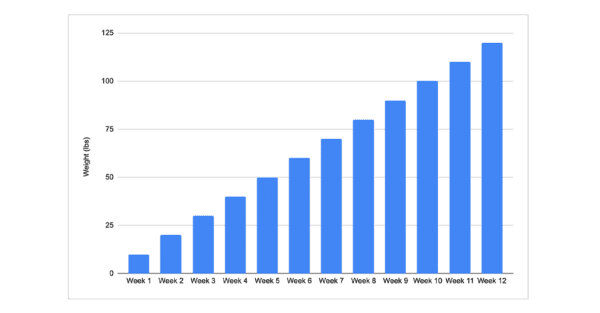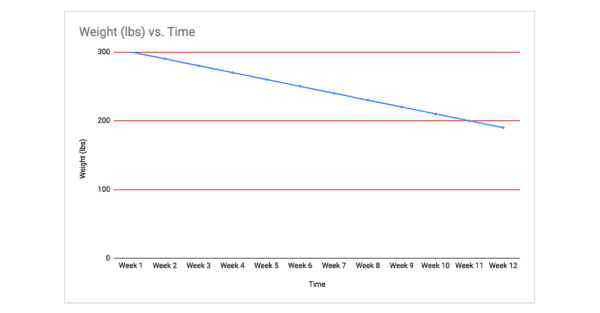Boredom is kryptonite for a personal trainer.
It hurts your client’s adherence to your well-designed plans, which lowers the likelihood of them reaching their goals. And a client who isn’t getting results doesn’t stick around for long, which hurts your retention rates and business growth.
So boredom is a very expensive problem, but one that is wholly avoidable. Once you understand why your clients get bored, you can put strategies in place to keep them engaged.
What causes client boredom?
Think of a time when you personally were not bored, and were fully engaged in the moment. Maybe you were in the zone on a project, or watching the finale of your favorite TV show, or going for a PR in the gym.
You didn’t need any special motivation because the task commanded your full attention. The fact you remember the moment shows how rare it is to be so completely engaged.
Attention, like willpower, is a finite resource.
A client who’s bored and requires motivation to follow your program presents two significant problems:
- They can’t stay engaged long enough to get the results they want.
- They focus too much on the parts of the workout they find painful or tedious.
Your goals are to narrow their attention and distract them from the things they don’t like.
One simple way to narrow attention: Get the client to focus on one small part of the workout, with the option to quit after just a few minutes if they aren’t feeling it.
It’s a great technique for the client who’s reluctant to work out at all. Boredom, though, is a different problem. The client wants to do something, but isn’t inspired by the program you’ve put in front of them.
Let’s look at how to get past that hurdle.
Four strategies to narrow your clients’ attention
1. Give your clients more variety
Progressive resistance is the key to everything we do with our clients. Progression requires consistency. But all too often, consistency comes at the cost of engagement and attention, which lowers enjoyment. If they’re not having fun, their motivation falls, and their attention wanders.
One obvious solution is to give the client more variety, without derailing the program. The variations should feel just different enough to the client to get them to focus their attention on the novelty of the task.
In other words, you’re still heading the same direction, but taking a slightly different path to get there.
For example:
- Switch the grip on an exercise
- Change the exercise order within a circuit
- Use a different exercise that works the same movement pattern with an equivalent intensity
- Introduce a new training technique
2. Focus on a specific element to improve
Another way to narrow a client’s attention is to get them to stop thinking about the whole workout and instead focus on just one part of the task.
Ideally the thing they focus on would be crucial to safety or performance. But it doesn’t have to be. It just has to be specific enough to capture their full attention.
A few examples:
- Stabilizing their shoulders during a one-arm row
- Using a new work-rest ratio on intervals
- Acquiring a new piece of home workout equipment and learning to use it
3. Create a distraction
This approach is especially useful for clients who complain about the discomfort of exercise—and that’s probably a lot of them.
The more a client focuses on physical aspects like burning muscles and shortness of breath, the more overwhelming exercise will be for them.
The converse is also true: The more they focus on something unrelated to the task, the less attention they’ll pay to the discomfort. It’s not that the pain goes away. It just diminishes enough for them to get through their workouts.
Where you direct their attention usually depends on the client and circumstances.
For in-person clients:
- Get them to go deep on something going on at home or work—anything from a remodeling project to an annoying coworker.
- Get their opinion on something going on with you that relates to their interests or expertise.
For online clients:
- Encourage them to listen to something interesting—an audiobook, podcast, or any type of music.
- If they can see a screen while working out, they can watch anything they enjoy, from documentaries to telenovelas to their favorite sitcoms.
Key point: It doesn’t matter where the client’s attention goes. What’s important is that they focus on something other than the elements of exercise they find uncomfortable or tedious.
4. Track their progress
Almost every new client will come to you with the goal of achieving specific results. That extrinsic motivation is enough to get them started, but it rarely lasts. What keeps them going is intrinsic motivation, the sense that exercise is its own reward.
What flips that switch? More than anything, it’s the feeling that their workouts are fun, and that their competence is steadily increasing.
To do it, you need to do three things:
- Clarify key metrics the client cares about and can show measurable progress in.
- Establish when and how you’ll collect data to show progress.
- Illustrate the progress with clear, colorful charts and graphs.
Do it right, and your clients should be able to see at a glance how far they’ve come. Here's how you might track strength in a specific exercise:
And here's how you might track weight-loss progression:
I recommend tracking several metrics at once, even if the client hasn’t specifically described them as goals. Let’s say, for example, that the client says she wants to increase her muscle “tone.” Good luck measuring something that isn’t really a thing.
But it’s real enough to her.
So instead of explaining the nuances of body composition, ask the client how she’ll know when she’s making progress toward that goal. When she draws a blank, suggest measuring other things, like strength (because stronger muscles should be more “toned”) and waist circumference (because a smaller midsection means she’s losing fat all over).
Don’t stop at just two metrics. Look for other ways to demonstrate progress. For example, if their goal is to “eat better,” look for specific targets you can track, like daily water or protein consumption.
(Online personal training software makes this simple and in some cases automatic.)
When you make it easy to see progress, and also explain why their progress in those metrics is important, your clients develop a stronger sense of competence. That, in turn, helps them enjoy their workouts.
The more they enjoy what they’re doing, the more likely they are to continue making progress as they seek new PRs and, by extension, further proof of their growing mastery.
Final thoughts on overcoming your clients’ boredom
Narrowing a client’s attention leads to a cascade of positive outcomes:
- Improved adherence
- Better results
- Happier clients
- Higher retention
- Better reviews and testimonials
- More referrals
- Increased profits
- Faster growth
All because you made it harder for your client to get bored.













